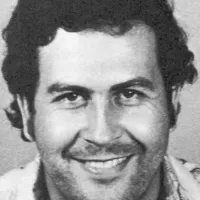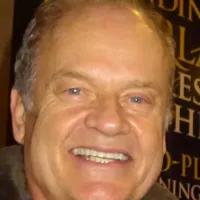Sir Ernest Henry Shackleton was a prominent Anglo-Irish Antarctic explorer during the Heroic Age of Antarctic Exploration. He spearheaded three British expeditions to the Antarctic, cementing his legacy as a key figure in early 20th-century exploration.
March 1900: Shackleton Meets Cedric Longstaff
In March 1900, Ernest Shackleton crossed paths with Cedric Longstaff, an army lieutenant whose father was a key financial supporter of the upcoming British National Antarctic Expedition.
1900: Previous Farthest South Record
The previous record for the Farthest South latitude was established in 1900 by Carsten Borchgrevink.
February 1901: Shackleton Joins British National Antarctic Expedition
Shackleton's application to join the British National Antarctic Expedition was approved, and he was appointed as the third officer on the Discovery. This marked the beginning of his polar exploration career.
July 1901: Discovery Sets Sail
The Discovery, carrying the British National Antarctic Expedition, embarked on its journey from London's East India Docks in July 1901.
January 1902: Discovery Reaches Antarctica
After months at sea, the Discovery arrived at the Antarctic coast in January 1902, marking the start of their exploration efforts.
November 1902: Shackleton's First Southern Journey
In November 1902, Shackleton, along with Robert Falcon Scott and Edward A. Wilson, embarked on a southern journey, setting a new record Farthest South latitude of 82°17′ S.
1902: Honoring Past Agreements
Shackleton had initially intended to utilize the Discovery base, but due to a prior agreement with Scott, he shifted his focus to either the Barrier Inlet or King Edward VII Land for his base. This decision reflected his commitment to previous arrangements and respect for Scott's territorial claim.
January 1903: Hardships on the Southern Journey
During January 1903, Shackleton and his team faced severe hardships on their southern journey. The dogs fell ill due to tainted food, leading to the death of all 22. The men battled snow blindness, frostbite, and scurvy. Shackleton's health deteriorated significantly, leaving him unable to perform his share of the work.
February 1903: Shackleton Sent Home
On February 3, 1903, Shackleton's team returned to the ship. Due to his poor health, Scott sent him home on the relief ship Morning, despite a medical examination with inconclusive results. Some speculate that Scott used Shackleton's health as a pretense, motivated by jealousy over his popularity.
1903: Seeking a New Path
In 1903, Shackleton unsuccessfully sought a regular commission in the Royal Navy, despite support from influential figures. He briefly explored journalism and later accepted the position of secretary at the Royal Scottish Geographical Society.
January 1904: New Beginnings and Family Life
Shackleton started 1904 by taking on the role of secretary for the Royal Scottish Geographical Society (RSGS) on January 11th.
1905: Financial Ventures and Political Aspirations
In 1905, Shackleton became involved in a speculative business venture aiming to transport Russian troops, but the endeavor proved fruitless. He also pursued politics, unsuccessfully running for Parliament in the 1906 general election.
1906: Balancing Work and Ambition
In 1906, Shackleton took a job with industrialist William Beardmore, all the while harboring a desire to return to Antarctica and lead his own expedition.
February 1907: Announcing the British Antarctic Expedition
Shackleton presented his ambitious plans for the British Antarctic Expedition to the Royal Geographical Society in February 1907. He aimed to conquer both the geographic and magnetic South Poles.
August 1907: Royal Recognition
On August 4, 1907, Shackleton's contributions to exploration were acknowledged when he was appointed a Member of the Royal Victorian Order, 4th Class.
August 1907: Setting Sail for Antarctica
The Nimrod, Shackleton's ship, embarked on the British Antarctic Expedition, departing England on August 7, 1907, and reaching New Zealand by November's end.
1907: Early Signs of Heart Condition
Diaries from 1907-1909 kept by Eric Marshall, medical officer of the 1907-1909 expedition, revealed that Shackleton might have had a congenital heart defect that explained his health issues.
1907: The Nimrod Expedition
Ernest Shackleton led the British Antarctic Nimrod Expedition from 1907 to 1909.
1907: Shackleton's Brother Implicated in Crown Jewel Theft
In 1907, Ernest Shackleton's brother, Frank, faced suspicion and was later cleared of involvement in the theft of the Irish Crown Jewels.
January 1908: Departure for the South
On January 1, 1908, the British Antarctic Expedition set off from New Zealand, marking the official start of their journey towards the Antarctic.
January 1908: Arrival at the Bay of Whales
On January 21, 1908, Shackleton's expedition arrived at the eastern sector of the Great Ice Barrier. They found the Barrier Inlet had transformed into a bay teeming with whales, promptly naming it the "Bay of Whales."
October 1908: The Great Southern Journey Begins
Shackleton, along with Wild, Marshall, and Adams, embarked on their ambitious "Great Southern Journey" in October 1908, aiming to be the first to reach the South Pole.
January 1909: New Farthest South and Discoveries
On January 9, 1909, Shackleton's team reached a new Farthest South latitude of 88°23′ S, a mere 112 miles from the South Pole. Their journey led to the discovery of the Beardmore Glacier and marked them as the first to traverse the South Polar Plateau.
January 1909: Triumphant Return and Lasting Legacy
The British Antarctic Expedition achieved significant milestones, including the first ascent of Mount Erebus and the identification of the South Magnetic Pole's approximate location on January 16, 1909. Shackleton returned to the United Kingdom a hero, sharing his experiences in his published account, "The Heart of the Antarctic."
July 1909: Public Recognition and Honors
In July 1909, upon his return from the Nimrod Expedition, Shackleton was met with widespread public acclaim. He was received by King Edward VII and awarded both the Commander of the Royal Victorian Order and a knighthood, becoming Sir Ernest Shackleton. He was also awarded a gold medal by the RGS.
1909: Early Signs of Heart Condition
Diaries from 1907-1909 kept by Eric Marshall, medical officer of the 1907-1909 expedition, revealed that Shackleton might have had a congenital heart defect that explained his health issues.
1909: Conclusion of the Nimrod Expedition
The Nimrod Expedition, a British Antarctic expedition led by Ernest Shackleton, concluded in 1909.
1909: A Toast to History
The year 1909 is highlighted because it marks the year when cases of whisky and brandy were left behind during Shackleton's expedition. These spirits were later recovered in 2010, providing a tangible link to the past.
February 1910: Shackleton Considers Antarctic Collaboration
In February 1910, Shackleton corresponded with the RGS regarding a potential scientific expedition to the Antarctic coast in collaboration with Douglas Mawson.
September 1910: Shackleton Contemplates Retirement from Exploration
After moving to Sheringham with his family, Shackleton expressed a desire to remain at home rather than embark on further expeditions, as he wrote to Emily in September 1910.
1910: Shackleton's Voice from the Past
In 1910, Shackleton utilized an Edison phonograph, a cutting-edge technology of the time, to record three brief descriptions of his expedition. These recordings would later serve as historical artifacts, offering a glimpse into his experiences in his own voice.
May 1911: Filchner's Trans-Antarctic Attempt Begins
German explorer Wilhelm Filchner launched his own trans-Antarctic expedition, departing from Bremerhaven in May 1911.
December 1911: Shackleton's Focus Shifts to Trans-Antarctic Crossing
With Roald Amundsen's conquest of the South Pole in December 1911, Shackleton shifted his attention towards a trans-Antarctic crossing, leading to the Imperial Trans-Antarctic Expedition (1914-1917).
December 1912: News of Filchner's Failure Reaches Shackleton
Shackleton learned in December 1912 that Filchner's expedition had failed to complete its trans-Antarctic crossing.
December 1913: Shackleton Announces Imperial Trans-Antarctic Expedition
Shackleton revealed his ambitious plan for the Imperial Trans-Antarctic Expedition in December 1913, aiming to cross the Antarctic continent.
August 1914: Endurance Sets Sail Despite World War I
Despite the outbreak of World War I, Winston Churchill granted permission for Endurance to proceed, and the ship departed British waters in August 1914.
December 1914: Endurance Begins Journey to the Weddell Sea
Endurance set sail from South Georgia toward the Weddell Sea in December 1914, marking the start of the expedition's journey into the Antarctic.
1914: The Endurance Expedition
The Imperial Trans-Antarctic Expedition, also known as the Endurance Expedition, took place in 1914, led by Ernest Shackleton.
1914: Imperial Trans-Antarctic Expedition Begins
The Imperial Trans-Antarctic Expedition, led by Shackleton, commenced in 1914 with the goal of crossing Antarctica from sea to sea via the South Pole.
January 1915: Endurance Trapped in Ice
The expedition faced a major setback in January 1915 when Endurance became trapped in the ice of the Weddell Sea.
November 1915: Endurance Abandoned and Sinks
In November 1915, with Endurance taking on water and sinking, Shackleton ordered the crew to abandon ship.
November 1915: Shackleton's Endurance Sinks
On November 1915, Shackleton's ship Endurance, trapped in pack ice, sank in the Weddell Sea. This event marked a turning point in the expedition, forcing Shackleton and his crew to fight for survival.
April 1916: Shackleton and Crew Launch the James Caird
In a desperate attempt to reach help, Shackleton and a small crew launched the James Caird, a small lifeboat, in April 1916 to sail to South Georgia.
August 1916: Rescue from Elephant Island
In August 1916, after several unsuccessful attempts, Shackleton managed to rescue his crew stranded on Elephant Island for four and a half months. They were rescued with the help of the Chilean tugboat Yelcho, commanded by Captain Luis Pardo.
1916: Shackleton's Journey Across the Southern Ocean
In 1916, Shackleton undertook a perilous journey across the Southern Ocean in a desperate attempt to rescue his stranded crew.
October 1917: Diplomatic Mission to South America
In October 1917, Shackleton was sent to Buenos Aires for a British propaganda mission. However, he was unsuccessful in persuading Argentina and Chile to join the Allied side during the war.
1917: Imperial Trans-Antarctic Expedition Ends
The Imperial Trans-Antarctic Expedition, marked by the loss of the Endurance but the survival of the crew, concluded in 1917.
April 1918: Return from South America and Arctic Mission
Shackleton returned from South America in April 1918. He briefly participated in a mission to establish British presence in Spitzbergen but fell ill, possibly with a heart attack.
July 1918: Military Appointment
Shackleton was appointed as a temporary major on July 22nd, 1918.
October 1919: Discharge from the Army
Shackleton was discharged from the army in October 1919, retaining his rank of major.
December 1919: Publication of "South"
Shackleton published his account of the Imperial Trans-Antarctic Expedition, titled "South," in December 1919.
1920: Planning for a Last Expedition
By 1920, Shackleton was considering a final expedition to the unexplored Beaufort Sea area of the Arctic. He garnered interest from the Canadian government and secured funding from John Quiller Rowett to acquire a Norwegian sealer renamed Quest.
September 1921: Departure for Final Expedition and Farewell Address
On September 16th, 1921, Shackleton recorded a farewell address before embarking on his final expedition. The expedition left England on September 24th, 1921.
1921: Shackleton Returns to the Antarctic
In 1921, Ernest Shackleton returned to the Antarctic for the Shackleton–Rowett Expedition.
January 1922: Death of Ernest Shackleton
In January 1922, Ernest Shackleton died of a heart attack while his ship was moored in South Georgia during his Shackleton–Rowett Expedition.
January 1922: Shackleton's Death
Upon arriving in Rio de Janeiro, Shackleton suffered a suspected heart attack but refused examination. He experienced discomfort and back pains and died of a fatal heart attack on January 5th, 1922.
March 1922: Memorial Services and Tributes
A memorial service was held for Shackleton in London's St Paul's Cathedral on March 2nd, 1922, attended by King George V and other Royal Family members.
March 1922: Burial in South Georgia
Shackleton was buried on March 5th, 1922, in the Grytviken cemetery in South Georgia, fulfilling his wish to be laid to rest near the site of one of his greatest expeditions.
May 1922: Shackleton's Will
Shackleton's will was proven in London on May 12th, 1922, revealing that he was heavily in debt.
1922: Publication of "The Worst Journey in the World"
Apsley Cherry-Garrard, a member of Scott's Terra Nova Expedition, published his book "The Worst Journey in the World" in 1922, in which he praised Shackleton's leadership.
1922: Apsley Cherry-Garrard's Memoir Recognizes Shackleton
Apsley Cherry-Garrard, in the preface to his 1922 memoir "The Worst Journey in the World," acknowledged Shackleton's exceptional qualities in times of crisis.
1925: End of the Heroic Age of Antarctic Exploration
1925 marked the end of the Heroic Age of Antarctic Exploration, a period defined by daring expeditions and scientific discoveries in the uncharted territories of Antarctica.
1932: Unveiling of Shackleton's Statue at the RGS
In 1932, a statue of Ernest Shackleton, crafted by Charles Sargeant Jagger, was unveiled at the Royal Geographical Society (RGS) headquarters in Kensington.
1936: Death of Emily Shackleton
Emily Shackleton, Ernest Shackleton's wife, passed away in 1936.
1939: Frank Wild's Death
Frank Wild, a significant figure in Shackleton's expeditions, died in 1939.
1943: Publication of "Shackleton in the Antarctic"
The year 1943 saw the publication of "Shackleton in the Antarctic," a booklet released by Oxford University Press as part of their "Great Exploits" series.
October 1955: Duncan Carse Retraces Shackleton's Route
British explorer Duncan Carse successfully crossed South Georgia in October 1955, following a similar path to Shackleton's treacherous journey.
1956: Shackleton's Legacy is Praised
In 1956, Sir Raymond Priestley praised Shackleton's leadership in the face of disaster during a British Science Association address.
1956: Sir Raymond Priestley's Address to the British Science Association
Sir Raymond Priestley, a contemporary of Shackleton, delivered an address to the British Science Association in 1956, highlighting Shackleton's exceptional skills in times of crisis.
April 1959: Publication of "Endurance: Shackleton's Incredible Voyage"
Alfred Lansing's book, "Endurance: Shackleton's Incredible Voyage," was published in April 1959, marking a turning point in the portrayal of Shackleton's legacy in a positive light.
1979: Publication of "Scott and Amundsen" by Roland Huntford
Roland Huntford's dual biography, "Scott and Amundsen," was published in 1979, offering a critical perspective on Scott's leadership and contributing to a shift in public perception.
1983: BBC Production of the Miniseries "Shackleton"
The BBC produced a four-part miniseries titled "Shackleton" in 1983, featuring David Schofield in the lead role and David Rodigan as Frank Wild.
1993: Trevor Potts's Re-enactment of the Boat Journey
In 1993, adventurer Trevor Potts undertook a re-enactment of Shackleton's perilous boat journey from Elephant Island to South Georgia, honoring his remarkable feat.
October 1999: "The Endurance: Shackleton's Legendary Antarctic Expedition" Photography Exhibition
A photography exhibition, "The Endurance: Shackleton's Legendary Antarctic Expedition," opened to the public at the American Museum of Natural History in New York, showcasing artifacts and photographs from the 1914 expedition.
2001: Publication of "Shackleton's Way: Leadership Lessons from the Great Antarctic Explorer"
Margaret Morrell and Stephanie Capparell's book, "Shackleton's Way: Leadership Lessons from the Great Antarctic Explorer," presented Shackleton as a model for effective leadership in the business world in 2001.
2001: Establishment of the Ernest Shackleton Autumn School
The Athy Heritage Centre-Museum (now the Shackleton Museum) in Athy, County Kildare, Ireland, inaugurated the Ernest Shackleton Autumn School in 2001 to commemorate his legacy.
2002: Channel 4's Production of "Shackleton" TV Serial
In 2002, Channel 4 in the UK aired "Shackleton," a TV series starring Kenneth Branagh that depicted the 1914 expedition.
2002: Shackleton Ranked Among Greatest Britons
In 2002, Ernest Shackleton secured the eleventh position in a BBC poll of the 100 Greatest Britons.
2002: BBC's "100 Greatest Britons" Poll
In 2002, a BBC poll ranked Ernest Shackleton as the 11th "Greatest Briton," reflecting his surging popularity.
March 2005: Asteroid Named After Shackleton
An asteroid discovered in March 2005 by Michel Ory, a Swiss astronomer, was named "289586 Shackleton" in honor of the explorer.
2010: Whisky from the Ice
In 2010, a century after being left behind, cases of whisky and brandy from Shackleton's 1909 expedition were recovered. The discovery sparked interest in the vintage beverages, prompting a distillery to recreate the formula and donate a portion of the sales to the New Zealand Antarctic Heritage Trust.
November 2011: Frank Wild's Ashes Interment
The ashes of Frank Wild, Shackleton's right-hand man, were laid to rest beside him in Grytviken in November 2011.
2011: Auction of Shackleton's Biscuit and Google Doodle Tribute
A biscuit given by Shackleton to "a starving fellow traveller" during the 1907-1909 Nimrod Expedition was auctioned at Christie's in London in 2011. The same year, Google commemorated Shackleton's would-be 137th birthday with a Google Doodle.
January 2013: Re-creation of Shackleton's 1916 Journey
In January 2013, a British-Australian team, led by Tim Jarvis, embarked on an expedition to recreate Shackleton's daring 1916 voyage across the Southern Ocean.
2013: Naming of Lichen-Forming Fungi Genus After Shackleton
A genus of lichen-forming fungi in the Teloschistaceae family was named Shackletonia by botanists Søchting, Frödén, and Arup in 2013, a unique tribute to the explorer.
October 2015: Auction of Shackleton's Decorations and Medals
October 2015 witnessed the auction of Ernest Shackleton's medals and decorations at Christie's, fetching a total of £585,000.
January 2016: Commemorative Stamps for the Endurance Expedition
The Royal Mail issued a series of UK postage stamps in January 2016 to mark the 100th anniversary of the Endurance expedition.
August 2016: Erection of Shackleton Statue in Athy
A statue of Shackleton, sculpted by Mark Richards, was erected in Athy, County Kildare, Ireland, in August 2016, sponsored by Kildare County Council.
March 2017: DVD Release of the BBC Miniseries "Shackleton"
The BBC miniseries "Shackleton," starring David Schofield, was released on DVD in March 2017, bringing the story of Shackleton's expedition to a wider audience.
2017: Debut of the Musical Play "Ernest Shackleton Loves Me"
The musical play "Ernest Shackleton Loves Me," written by Val Vigoda and Joe DiPietro, premiered in 2017 at the Tony Kiser Theater in New York City, offering a creative interpretation of Shackleton's adventure.
2023: Financial Struggles and Recognition
Despite the acclaim for his expedition, Shackleton found himself deeply in debt in 2023, unable to meet his financial obligations. A government grant helped to alleviate some of the debt.
2023: Shackleton's Debt in Today's Value
Shackleton died £40,000 in debt, which is equivalent to £2,758,944 in 2023.
2023: Fundraising and Public Interest in Shackleton's Expedition
Shackleton's expedition garnered significant public interest and financial support, with private donations and a government grant totaling £1,212,201 in 2023.
2023: Note on Historical Currency
The year 2023 is mentioned in relation to converting a historical monetary value to its present-day equivalent.
February 2024: Memorial Plaque Unveiling
In February 2024, a memorial plaque honoring Ernest Shackleton, sculpted by Will Davies, was unveiled in the south cloister of Westminster Abbey. Anne, Princess Royal, officiated the unveiling ceremony.
Mentioned in this timeline

Google LLC is a multinational technology company specializing in online...
New Zealand is an island country located in the southwestern...
India officially the Republic of India is a South Asian...

News encompasses information about current events disseminated through various media...
France officially the French Republic is primarily located in Western...
Argentina officially the Argentine Republic is located in the southern...
Trending

2 months ago Virginia Vallejo, Pablo Escobar's ex, reveals health struggle: Suffered a brutal stroke.

7 months ago Jake Gyllenhaal's 'Othello' Snubbed by Tony Awards Despite Box Office Success with Denzel Washington.
8 days ago World Cup 2026 Draw: Brazil in Group C, France's Path

Maisie Williams is an English actress who gained widespread recognition for her role as Arya Stark in the HBO series...

2 months ago Dakota Johnson's Epic Response to 'Naked Dress' Queries and Red Carpet Fashion
21 days ago SpaceX Falcon 9 Launches Starlink Satellites from Cape Canaveral on 150th Mission.
Popular

Candace Owens is an American conservative political commentator and author...

Ilhan Omar is an American politician currently serving as the...

XXXTentacion born Jahseh Dwayne Ricardo Onfroy was a controversial yet...

Tom Cotton is an American politician and Army veteran currently...

Kelsey Grammer is an accomplished American actor producer and singer...
The Kennedy Center Honors are annual awards recognizing individuals and...
